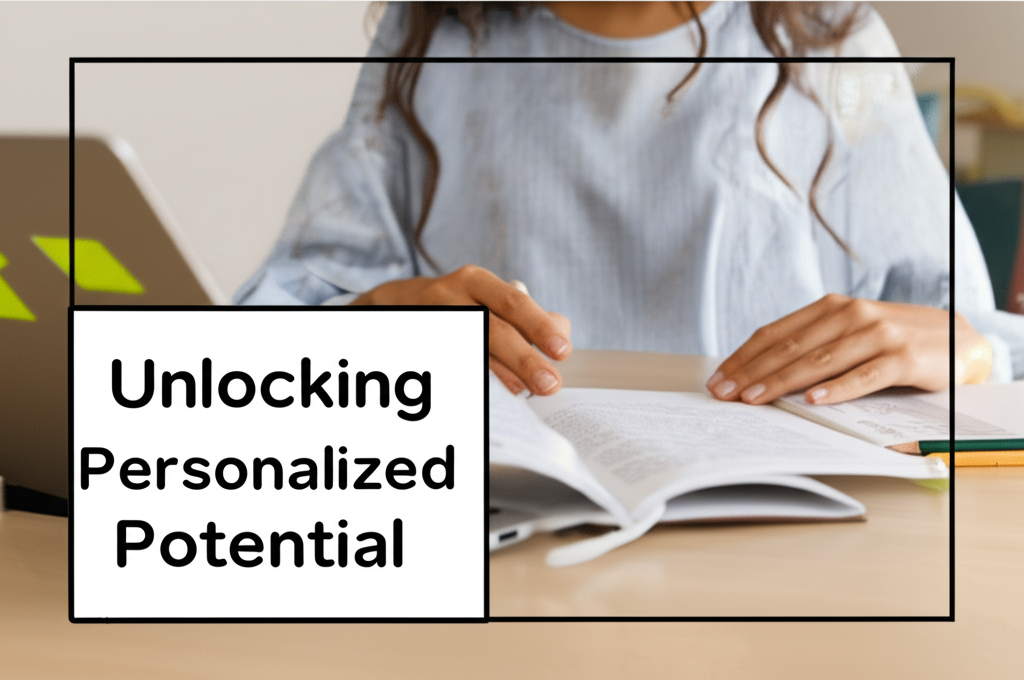 illustration from Gemini
illustration from Gemini
Empower Every Learner: Practical Strategies for Personalized Classrooms
Step into any modern classroom, and you'll find a vibrant mix of learning styles, paces, and passions. The traditional one-size-fits-all teaching model, once the standard, struggles to meet the unique needs of this diverse student body. This is where personalized learning shines – a transformative approach that customizes education to fit each student's individual strengths, challenges, interests, and ambitions. It's more than a trend; it's a fundamental move towards a fairer, more effective way of teaching and learning.
Why the Shift to Personalization? Moving Beyond Standardization
Historically, education aimed to standardize skills for an industrial world, relying heavily on rote learning and uniform lessons. But as we've learned more about how people actually learn, the limits of that old model have become clear. We now know students absorb information differently – visually, auditorily, kinesthetically. Some thrive on collaboration, others prefer working alone. Personalized learning embraces these differences, aiming to create experiences that truly resonate with each individual.
What Exactly *Is* Personalized Learning? Core Principles
Personalized learning tailors instruction to individual student needs, preferences, and interests, empowering them to become active participants in their education. Key ideas include:
- Student Voice & Choice: Learners have a say in their goals, how they learn, and how they show what they know.
- Custom Learning Paths: Instruction adapts to individual styles, speeds, and existing knowledge.
- Data-Informed Decisions: Teachers use progress data to guide instruction and support.
- Flexible Environments: Learning happens in various ways and spaces, not just the traditional classroom setup.
- Mastery-Based Advancement: Students progress by demonstrating understanding and skills, not just by time spent in class.
The Powerful Impact of Personalized Learning
Adopting personalized learning brings significant advantages:
- Boosted Engagement: Students invested in their learning path are naturally more motivated.
- Stronger Academic Gains: Tailored approaches lead to deeper understanding and better knowledge retention.
- Essential Skill Development: Cultivates critical thinking, problem-solving, collaboration, and communication.
- Increased Equity: Addresses the needs of all learners, including those with diverse learning profiles or backgrounds.
- Future-Ready Students: Equips learners with the adaptability and skills needed for a changing world.
Actionable Strategies for Your Classroom
Making personalized learning happen requires new approaches and tools. Here are practical strategies to get started:
1. Know Your Learners: The Foundation
Understanding your students is step one. Use various methods:
- Diagnostic Checks: Gauge prior knowledge and identify learning gaps.
- Learning Style Inventories: Understand preferred ways of learning (visual, auditory, hands-on).
- Interest Surveys: Tap into passions and curiosities.
- One-on-One Chats: Discuss goals and aspirations directly.
Creating simple student profiles from this information helps tailor your teaching effectively.
2. Co-Create the Journey: Goals & Plans
Collaborate with students to set meaningful learning goals and outline plans. Ensure goals are SMART:
- Specific: Clear learning targets.
- Measurable: Ways to track progress.
- Achievable: Realistic yet challenging.
- Relevant: Connected to student interests or future goals.
- Time-Bound: Defined timelines.
Student involvement here builds ownership and motivation.
3. Differentiate Your Approach: Content, Process, Product
Differentiation is key. Adjust *what* students learn, *how* they learn it, and *how* they demonstrate understanding:
- Content: Offer resources at various reading levels and formats.
- Process: Provide diverse activities – discussions, projects, independent study, hands-on labs.
- Product: Allow varied ways to show mastery – essays, presentations, models, videos, portfolios.
4. Leverage Technology Wisely
Digital tools can be powerful allies for personalization:
- Learning Management Systems (LMS): Platforms like Canvas or Google Classroom help organize resources and track progress.
- Adaptive Learning Software: Tools like Khan Academy adjust difficulty based on student performance.
- Digital Content Hubs: Access vast libraries like OER Commons for diverse materials.
- Collaboration Platforms: Tools like Google Workspace or Microsoft Teams foster teamwork.
5. Group Dynamically: Flexible Learning Pods
Use flexible grouping based on current needs, interests, or project goals. Groups should be fluid, changing as learning progresses, allowing for targeted instruction, peer teaching, and collaborative challenges.
6. Engage with Purpose: Project-Based Learning (PBL)
PBL immerses students in tackling real-world problems. This allows them to apply knowledge meaningfully, hone critical skills, and collaborate. Projects can easily be personalized around student interests.
7. Focus on Mastery: Competency-Based Progression
Shift the focus from 'seat time' to demonstrated competence. Students advance when they've mastered specific skills, allowing them to move at their own pace and receive support where needed.
8. Fuel Growth: Continuous Feedback & Support
Regular, constructive feedback is crucial. Make it specific, timely, and focused on growth. Ensure students know where to find help and resources when they face challenges.
Navigating the Hurdles: Overcoming Personalization Challenges
Implementing personalized learning isn't without obstacles:
- Resource Needs: Requires adequate technology, diverse materials, and professional development.
- Time Investment: Planning and managing individualized paths can be time-intensive initially.
- Embracing Change: Shifting from traditional methods requires buy-in and support.
- Assessment Complexity: Measuring progress across diverse learning paths needs thoughtful approaches.
Overcoming these involves strategic planning, providing robust support and training for educators, clear communication about the benefits, and involving everyone in the process.
Personalized Learning: Shaping the Future of Education
Personalized learning isn't just a temporary fix; it represents the future direction of education. As technology advances and our understanding of learning deepens, tailoring education to the individual will become the norm. By embracing it now, we build a more equitable system that truly unlocks the potential within every student.
Ready to Personalize? Take the Next Step!
Are you inspired to bring more personalized learning into your classroom? Start small, explore the strategies discussed here, and seek out resources. Share your own experiences and questions in the comments – let's learn together!
Published on April 27, 2025
reference: Personal Blog
Gema
Wordsmith and content writer passionate about creating high-quality content that informs, entertains, and inspires. Let me bring your brand's story to life.
All stories by : Gema

0 Comments